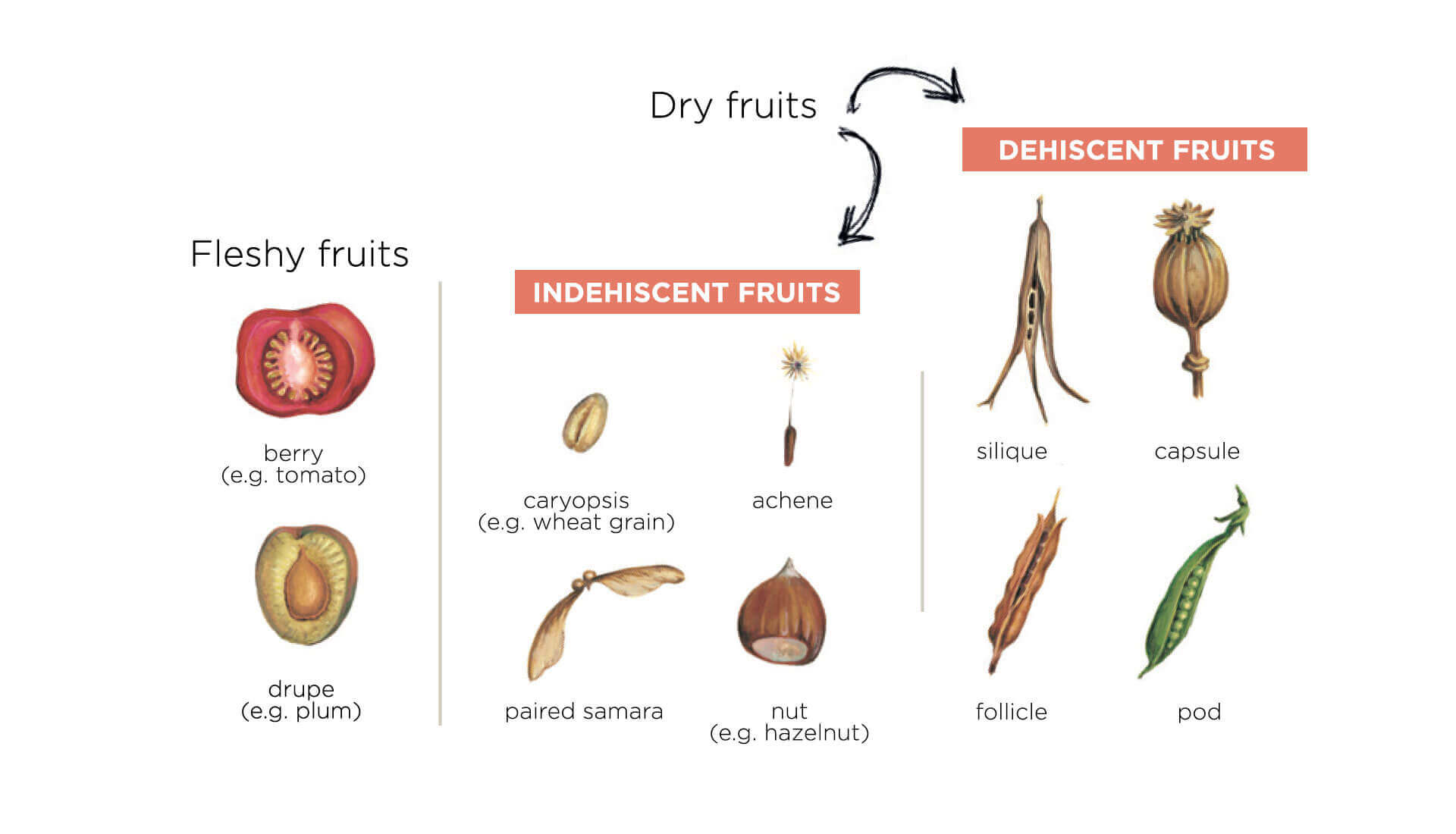Reference sheet: fruits
In common parlance, the word "fruit" normally refers to a sweet-tasting, edible plant organ.
Fleshy fruit or dry fruit?
Depending on how the ovary develops after fertilization, it can become a dry fruit (Hazelnut, Acorn, Bean…), a seeded fleshy fruit or BERRY (Redcurrant), or a pitted fleshy fruit or DRUPE (Olive).
If the ovary's outer wall is thin and dry surrounding the seed or seeds, it is a dry fruit.
On the other hand, if the ovary's outer wall is succulent (full of water, sugar, pigments and other substances), the fruit is described as 'fleshy': a berry or a drupe.
Dry fruits can be dehiscent (meaning they split open and release their seeds when they mature), like Pea or Bean pods or Poppy or Tulip capsules, or they can be indehiscent, known as achenes (which remain closed, surrounding the seed), such as Dandelion, Maple, Elm, Hazelnut or Acorn fruits.
Berry or drupe ?
In drupes, the inner part of the ovary, called the endocarp, is thick and hard, forming a strong, stony pit around the seed.
In berries, on the other hand, the endocarp forms a thin, flexible envelope around the seed. The consumption of berries and drupes by animals enables their seeds and pips to be spread around. They are not harmed by the animal's digestion and are excreted a short distance away.

What is a berry?
In common language, BERRY refers to any small, relatively juicy fruit. When ripe, berries are generally brightly coloured (yellow, red or black). The proposed classification system shows the berry's colour when ripe. But watch out, black berries can go through an intermediate red stage.
Schematic differences between berries and drupes:
Note 1: it is not always the ovary which becomes fleshy; it can be another part of the flower, such as the receptacle, in which case the correct botanical term is 'accessory fruit' (such as the strawberry).
Note 2: it is possible to buy 'seedless' fruit, such as grapes or clementines. When the ovule is fertilized, the seeds that form produce plant hormones that trigger the ovary's development into a fruit. Seedless or 'parthenocarpic' fruits are artificially produced by spraying substances that resemble these natural plant hormones onto the flower before it is fertilized. The ovary turns into a fruit while the unfertilized ovules break down. Sometimes fertilization happens anyway, in which case you might find a seed!
